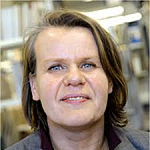Hazardous Waste and Human Health
A special issue of International Journal of Environmental Research and Public Health (ISSN 1660-4601).
Deadline for manuscript submissions: closed (30 June 2019) | Viewed by 100103
Special Issue Editors
Interests: environmental geochemistry and health; behavior and transport of pollutants in atmospheric, aquatic, and terrestrial environments; policy related to environmental regulation (waste and environmental management); contaminated land risk and remediation; urban management; environmental and public health
Special Issues, Collections and Topics in MDPI journals
Interests: Environmental Management; Solid Waste Management; Waste Treatment; Environmental Resources Management; Recycling; Life-Cycle Assessment; Resource Management; Waste; Electronic Waste; Civil Engineering; Environmental Engineering; Bioengineering; Environmental Impact Assessment; Renewable Energy
Interests: effects of environmental pollution and health, use of geographical information science in studies of environment and health, environmental modelling (statistical approaches and dispersion modelling), exposure assessment, environmental epidemiology, risk assessment, personal monitoring, mitigation to promote healthy environments
Special Issue Information
Dear Colleagues,
Waste management continues to dominate as one of the major societal challenges. It has been addressed to varying degrees across world economies and vast differences in response are found across regions and within social groups. Increasing interest in promoting circular economy has driven waste classifications and hierarchy to prioritise reduced production and recycling over incineration and landfilling. Whilst modern technology can significantly reduce emissions of hazardous substances, many examples exist of old generation facilities are in use or poorly managed, or informal uncontrolled dumping or open air burning of waste takes place. Often these practices affect marginalized social groups. We invite submissions of high quality review or primary research on aspects relevant to the management of hazardous wastes and identify links to human health protection, the assessment of impact of practices on health outcome, including methodological research on exposure modelling and assessments, and priorities for health impacts and their inequality.
Prof. Dr. Andrew Hursthouse
Guest Editor
Manuscript Submission Information
Manuscripts should be submitted online at www.mdpi.com by registering and logging in to this website. Once you are registered, click here to go to the submission form. Manuscripts can be submitted until the deadline. All submissions that pass pre-check are peer-reviewed. Accepted papers will be published continuously in the journal (as soon as accepted) and will be listed together on the special issue website. Research articles, review articles as well as short communications are invited. For planned papers, a title and short abstract (about 100 words) can be sent to the Editorial Office for announcement on this website.
Submitted manuscripts should not have been published previously, nor be under consideration for publication elsewhere (except conference proceedings papers). All manuscripts are thoroughly refereed through a single-blind peer-review process. A guide for authors and other relevant information for submission of manuscripts is available on the Instructions for Authors page. International Journal of Environmental Research and Public Health is an international peer-reviewed open access monthly journal published by MDPI.
Please visit the Instructions for Authors page before submitting a manuscript. The Article Processing Charge (APC) for publication in this open access journal is 2500 CHF (Swiss Francs). Submitted papers should be well formatted and use good English. Authors may use MDPI's English editing service prior to publication or during author revisions.
Keywords
- exposure
- risk assessment
- waste management
- air pollution control
- landfilling
- open burning
- health effects
- illeagal waste shipment
- informal sector







